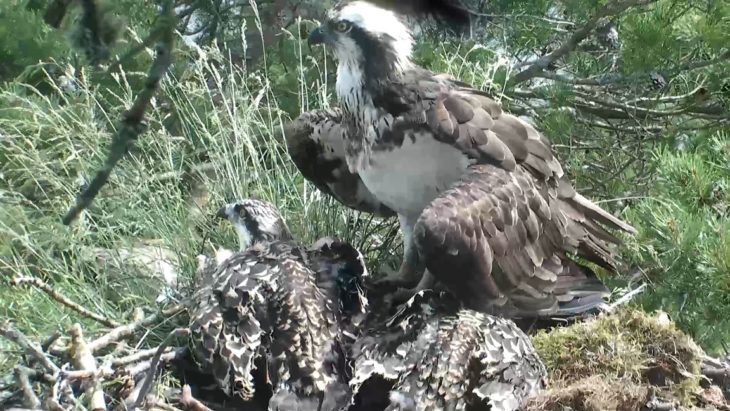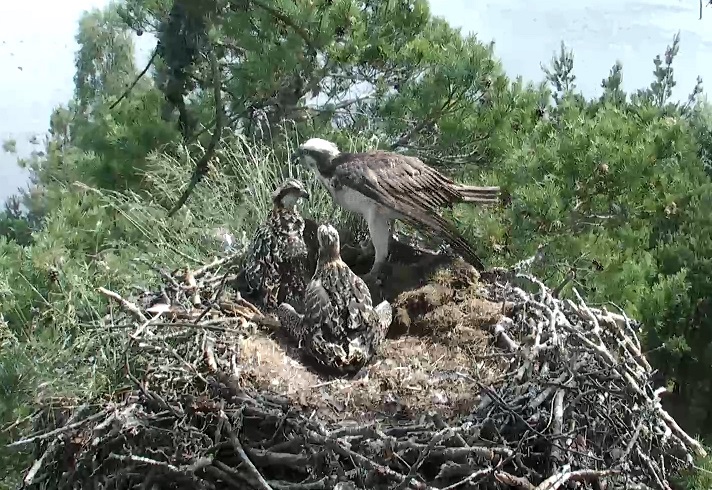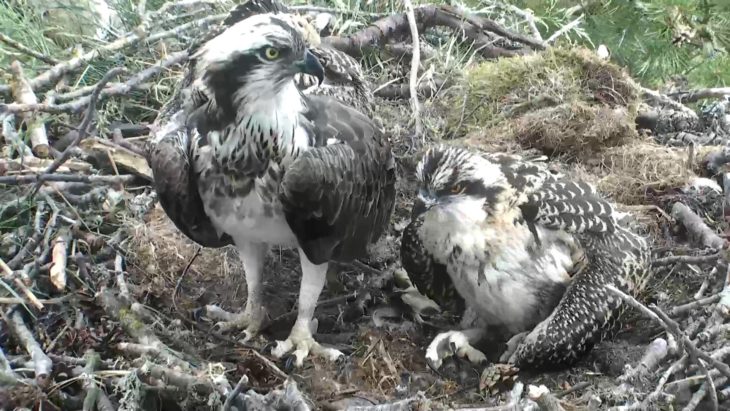Osprey Update: Week 5
Today marks five weeks since the first osprey egg hatched and we are pleased do see that they are still doing very well. Thankfully, the noise problems from the weekend have been resolved and it hasn’t seemed to affect the ospreys’ wellbeing.

At this point, the chicks are starting to look more and more like the adults every day. They are much larger, though the female remains on the nest to protect them and provide warmth, but also shade when it gets too hot. They should be ready to fly between 7-8 weeks of age. This means that we are now starting to see them test their wings, and we will be able to see more of this over the next few weeks.
This can be seen with them lifting off in short “hops” and flapping their wings (known as “helicoptering”), before leaving the nest for the first time. The adults encourage the young to fledge by bring back less and less fish when it gets closer to the time. The young ospreys will be ready to migrate between 12-14 weeks after learning to hunt.
The young ospreys can often be seen wandering about the nest now, which helps to develop muscle strength, as well as improve coordination. It is part of the preparation for fledging. It is also noticeable that the chicks’ wings lie on the ground when they are standing, unlike the adult ospreys. It looks as though they are stooping and leaning on the wings. This is because the muscles that are required to arch them like their parents’ are still developing. Practice stretching and the flight hops will help to develop this muscle.

You may have also noticed that the chicks have become a lot more stable in the past week or so, and this is because the chicks are reaching the stage where they can stand flat-footed with their toes and talons splayed. This is an important development that will lead to them being able to grip firmly, in preparation for being able to fish and perch when they leave the nest.

As the chicks grow larger, more people are curious about whether we can identify their sex. Unfortunately, there isn’t an easy way to work this out as there aren’t always consistent differences in plumage between males and females. Female ospreys end up around 30% larger than males, but during development, size is very dependent on nourishment so can be misleading.
We look forward to seeing the osprey chicks continue to develop, as well as the other young birds around the loch. It’s worth giving us a visit at the moment as the feeding station is bursting with young birds, including yellowhammers and great spotted woodpeckers, which make for fantastic viewing.
Thanks for reading,
Olivia Cooper
Visitor Centre Assistant
Help protect Scotland’s wildlife
Our work to save Scotland’s wildlife is made possible thanks to the generosity of our members and supporters.
Join today from just £3 a month to help protect the species you love.
Preface
Today marks five weeks since the first osprey egg hatched and we are pleased do see that they are still doing very well. Thankfully, the noise problems from the weekend …
